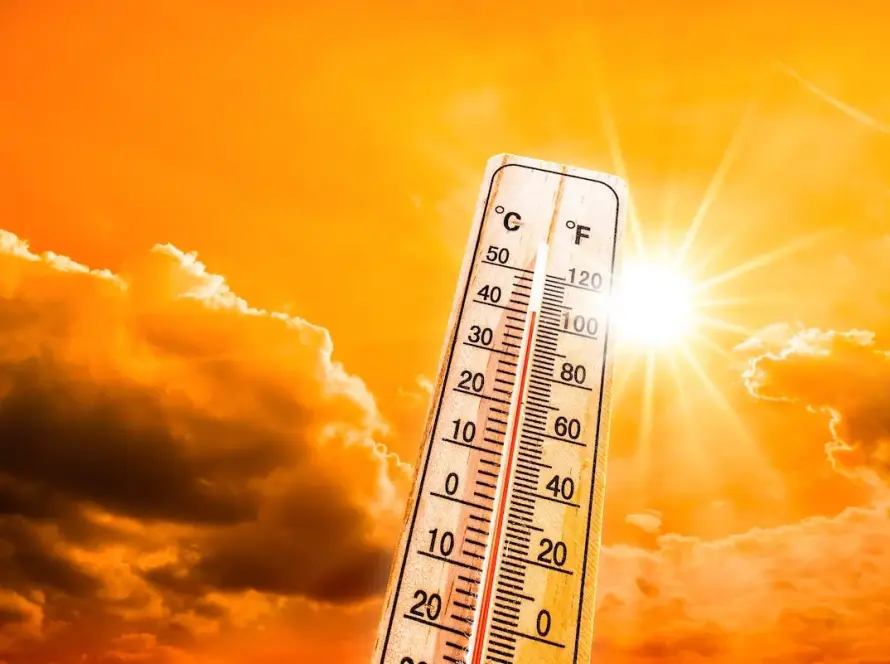Everybody has a room in their house that is perpetually overly warm in the afternoon. It never seems chilly in there, maybe because of the abundance of windows or because it’s in the sun’s path. The same principle covers your roof cooling paint. Dark shingles are a sun magnet, mainly if you reside in a region with many hot days. They absorb heat and raise your cooling bills, especially in the late afternoon, when demand is highest, and power providers are more susceptible to outages and other issues. That indicates the possibility of your roof being 90 degrees warmer than the surrounding air. This article will discuss why roof cooling paint is essential.
What Is Cool Roof Coating?
Mainly reflecting pigments, often white, reflect light and make up cool roof coatings. Consider them as extremely thick cooling paint that shields the roof surface from water and chemical damage as well as UV radiation. Cool roof coatings also provide excellent solar reflectance and thermal emittance. Summertime temperatures on conventional or dark building roofs can reach 150°F or higher.
Under comparable circumstances, however, the same roof with an excellent roof coating can remain more than 50°F cooler, saving you money and energy. In addition, highly reflective and anti-fungal, cool roof coatings are incredibly easy to maintain and offer outstanding value for the money. Roof cooling paint, readily applied with a roller or brush, features superior crack bridging and the highest water resistance. It also has many other significant benefits.
The advantages of cool roofs
Cool roofs lower the temperature of a building overall by reflecting heat and sunshine away from it. Installation of cool roofs offers the following benefits:
- A higher caliber of the air
Cooling paint traps less smog and other high-temperature pollutants, resulting in better air quality. They may be a practical and reasonably priced solution to reduce energy use, enhance building comfort, and mitigate the negative impacts of urban heat islands.
- Putting in a Cool Roof
Cool roofs are becoming an increasingly common energy—and heat-saving building solution. They reflect more sunlight than ordinary roofs, which can significantly lower the cooling energy needed. If you install a cool roof on your building, here’s what to expect.
- Analysing the Existing Roof
Before installing a cool roof, it is necessary to determine whether the existing roof can support the new system. One part of the evaluation involves looking for leaks, damage, and necessary repairs.
- Material Selection
Cool roofs can be built with tiles, single-ply membranes, and reflective coatings, among other materials. The selection of materials is influenced by factors such as building codes, temperature, and the kind of roof.
- Surface Preparation
After material selection, the roof surface must be prepared for installation. This usually means cleaning the surface and removing debris or existing coatings.
- Convenience
The method of installation depends on the type of material to be used. Light-reflective coatings are sprayed or rolled over the roof’s surface. A one-ply membrane fastened with nails or adhesive covers the roof. On tile roofs, reflective tiles are substituted for older ones.
- Cleaning Cool Roofs
Cool roofs reduce building energy expenses and heat loss. Like any other roofing material, they need adequate maintenance to operate well and last long.
- Restor damage fast
If any damage is to be prevented from worsening and causing more severe problems, the cool roof must be repaired immediately. Get a licensed roofer to repair any roof damage.
- Keep insulation up
The insulation of a cool roof makes all the difference. Ensure the insulation was installed correctly and inspect it for the degradation on a regular basis. Cool paint for roofs needs routine maintenance, cleaning, and inspection. These easy steps will extend the life and energy economy of your cool roof.
Types of Cool Roofs
The roofs of buildings determine their energy efficiency the most. They protect the structure against the weather and significantly impact its internal temperature. The color and materials of an excellent roof cooling paint can affect how much heat is absorbed and reflected, which involves the structure’s energy consumption and level of comfort.
Reflective and emissive cool roofs are designed to deflect heat and sunlight away from the structure, reducing the quantity of heat-reflective cool paint for roof absorption. We shall discuss these two types of cool roofs in greater depth.
- Reflective Cool Roofs
Lowering the heat absorption is achieved by heat reflecting cooling paint and sunshine away from the building. Usually built of light-colored materials with a robust solar reflective roof coating, such as white or light grey, these roofs look fantastic. The solar reflectance of a material is its ability to reflect sunlight. Reducing heat absorption using reflective, cool paint for the roof saves energy and air conditioning.
These roofs also reduce urban heat island effects, which are the phenomenon where metropolitan areas are substantially warmer than neighboring rural areas since pavement and buildings absorb heat. Raising the temperature, a black or dark hue will absorb all light wavelengths. Light hues or white will reflect every wavelength of light. As such, the light does not generate heat, and the temperature is not increased.
- Emissive Cool Roofs
In contrast, cool roofs are meant to disperse heat away from the structure. Usually, these roofs are constructed of very thermally radiating materials. Usually dark in color, such as black or dark grey, reflective, cool roofs are carefully coated to disperse heat-resistant paint away from the building. The building absorbs the atmosphere and releases good roof cooling paint function by returning the heat.
Conclusion
Above all, it helps a building absorb less heat, which lowers energy costs and improves interior temperature. Moreover, the urban heat island effect from cities and other metropolitan areas absorbing and radiating heat, rising temperatures, and energy consumption can be lessened with heat-resistant high-temperature cool paint for roof. By retaining less heat inside the building, air conditioning and energy costs are lessened. When the sun’s radiation can greatly enhance building heat intake in hot, sunny weather, reflective cool roofs are advantageous. For the ideal patio finish, use Summer Seal paint, which shimmers in the light.




